


John Cage
Music of Changes
Music of Changes was the second work Cage composed to be fully indeterminate in some sense (the first is Imaginary Landscape No. 4, completed in April 1951, and the third movement of Concerto for prepared piano also used chance), and the first instrumental work that uses chance throughout. He was still using magic square-like charts to introduce chance into composition, when, in early 1951, Christian Wolff presented Cage with a copy of the I Ching (Wolff’s father published a translation of the book at around the same time). This Chinese classic text is a symbol system used to identify order in chance events. For Cage it became a perfect tool to create chance-controlled compositions: he would “ask” the book questions about various aspects of the composition at hand, and use the answers to compose. The vast majority of pieces Cage completed after 1951 were created using the I Ching.
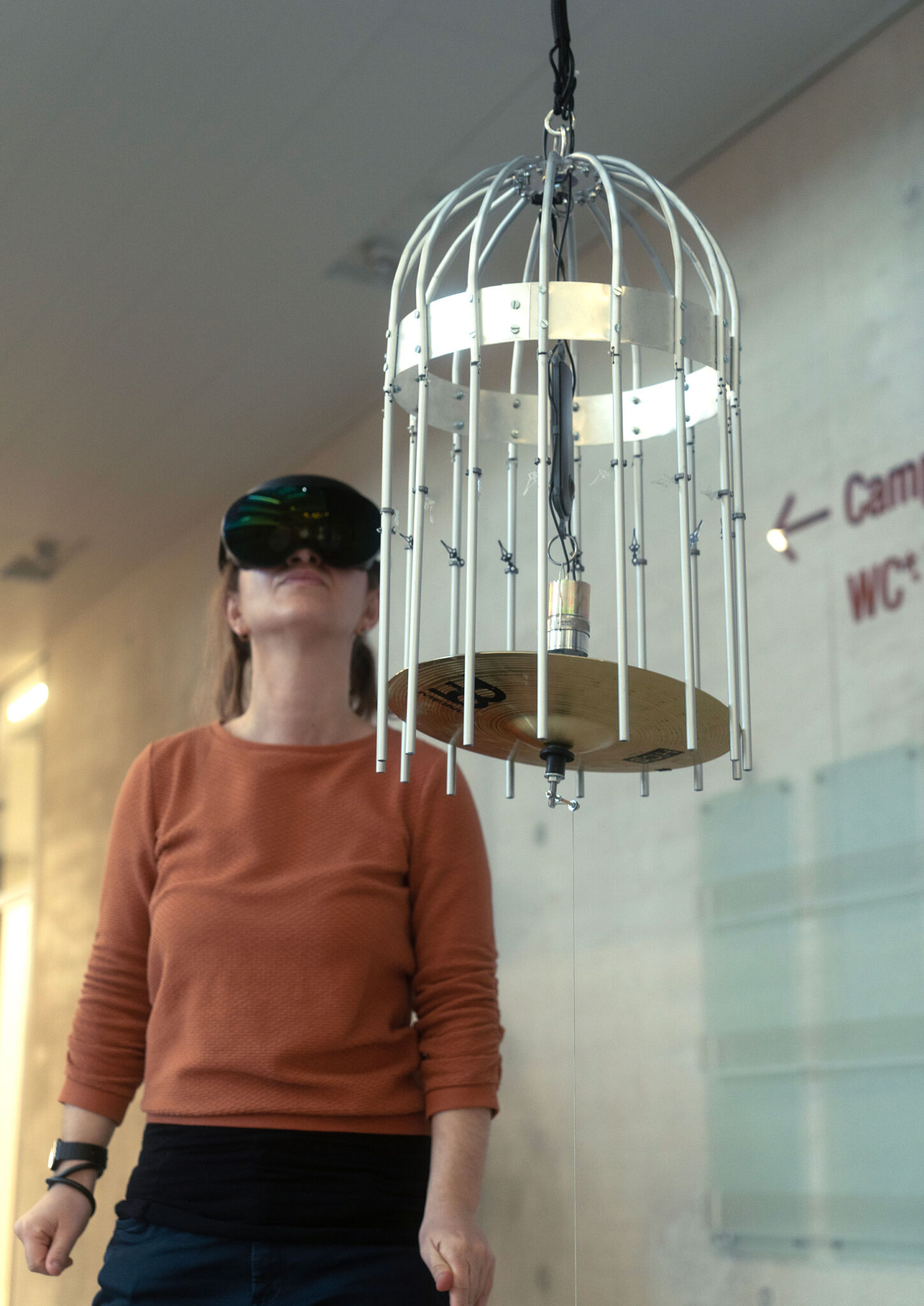
QUBIT AI: Anna Vasof & VRinMotion Team
The Cage of Time
FILE 2024 | Installations
International Electronic Language Festival
Interactive installation that presents a kinetic instrument object and virtual reality glasses, functioning as a device that animates the illusion of the passage of time in virtual space. In the fabric of existence, time weaves a cage around our ephemeral moments, limiting our perceptions of the past, present and future. By embracing this paradox, we may discover that the cage of time becomes the crucible where the alchemy of experience transforms our understanding of existence.
Bio
Anna Vasof is a multi-award-winning artist who focuses on filmmaking, short videos, and time-based sculptures. VRinMotion is an artistic research project based at St. Pölten University of Applied Sciences in Austria that investigates how features of stop-motion animation and motion capture can be combined with virtual reality to enrich current artistic discourse.
Credits
VRinMotion Team: Franziska Bruckner, Christoph Schmid, Clemens Gürtler, Matthias Husinsky, Christian Munk, Julian Salhofer, Stefan Nebel, Vrääth Öhner.
Concept by: Anna Vasof.
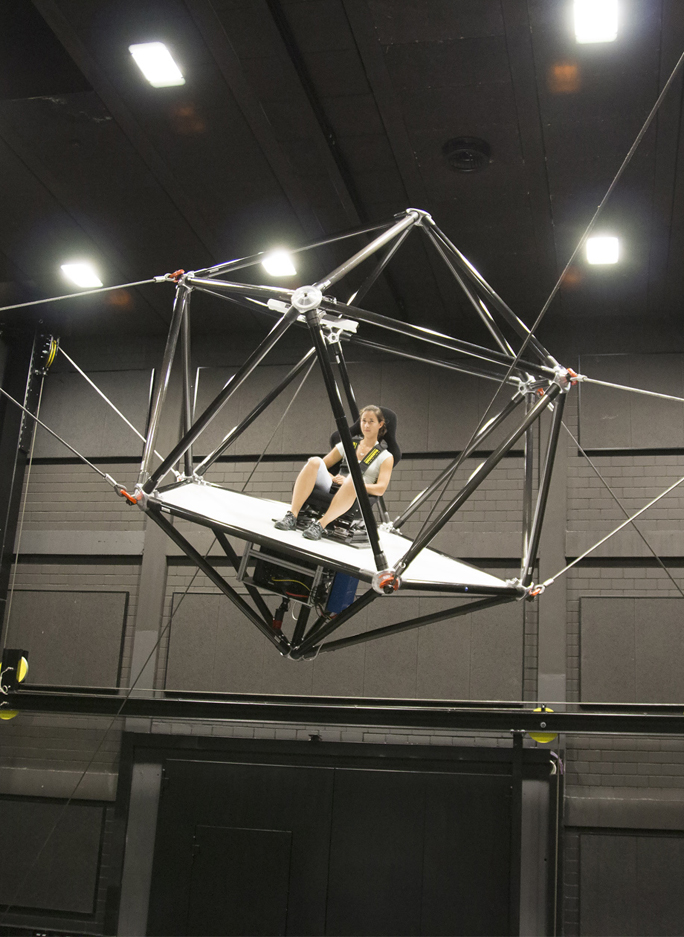
Heinrich Bulthoff
Cable Robot Simulator
Max-Planck-Institut für biologische Kybernetik
Eight steel cables, each with 1.4 tons of tensions, hold aloft a caged platform with a seat for one person. Using a wireless VR headset, that person can simulate experiences like flight while being zoomed in dozens of different ways. Eight retracting cables connected to a winch pull on the cage. It’s like a giant, flying VR jungle gym.
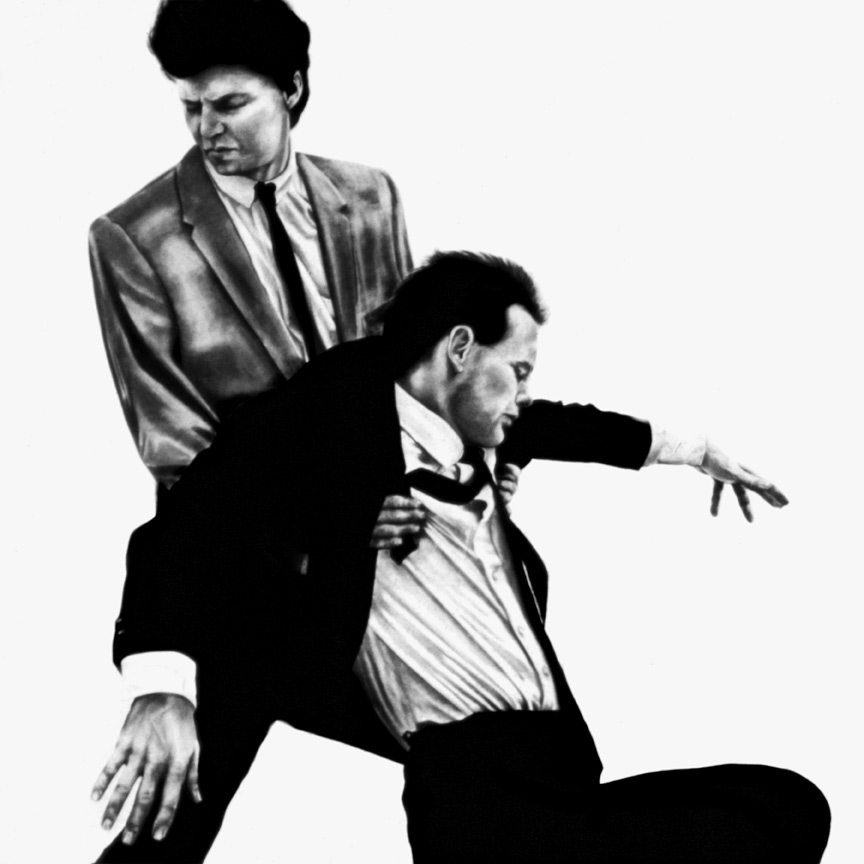
Glenn Branca
Lesson Nº 1 + The Ascension
Glenn Branca has always been a musician positioned halfway between the role of avant-garde composer and that of a rock musician. A pupil and disciple of the masters of American minimalism such as La Monte Young, Terry Riley, Philip Glass and Steve Reich, he has always had to fight against prejudice and fierce criticism. His position was certainly uncomfortable, too academic for rock fans and too “politically incorrect” for academics. In fact, Branca was trying to unhinge all the limits imposed by the rigid schemes of the avant-garde, aware of the fact that those who want to be truly avant-garde should have no limits. John Cage was also able to criticize him, even calling him a fascist ( Luciano Berio also did so for all minimalists) for the excessive rigidity of his compositions, even though he recognized his innovative power. After having created his best known album, The Ascension (1981), a true monument of maximalism played with a classical rock formation (guitars, bass and drums), he tries to approach a different format, the Symphony, as always halfway between rock and academia. Branca will like the experiment and will re-propose it several times in the following decades, to date there are sixteen symphonies (not all recordings are available). Here is how young Branca’s ensemble appeared to the American composer John Adams in one of his first live performances of the First Symphony: “Branca’s event that I listened to at the Japan Center Theater in San Francisco in 1981 was one of his symphonies for guitar . The group didn’t look very different from thousands of other independent or alternative rock bands of the time: guys in jeans and worn t-shirts busy with cables while maintaining that typical distracted expression of rock musicians.

Frederik Heyman
CEREMONIAL FORMALITY
Frederik Heyman’s work is a balancing act incorporating multiple media – including video, installations and photogaphy – often in a digitally altered environment. In his work, Heyman explores memory and duration, using photogrammetry and 3D scanning to depict and represent the passage of time. The hallmarks of Heyman’s work are mechanical and technological: wires, wheels, scrolling LED marquees, metal frames, clamps, industrial lights, screens and cameras. Bodies–as opposed to humans–are subject to unusual dynamics with these technological trappings. In Ceremonial Formality (2020) a contortionist is encased in a metal cage while a spectator, hooked up to wires, looks on.

NOHLAB & PLATO MEDIA LAB
Deep Space Music reúne som e imagem, música e animação por computador de uma forma que transforma o espaço de projeção em um cenário para experiências íntimas. Nele, o pianista japonês Maki Namekawa apresenta um programa de obras de três compositores visionários que também são considerados grandes pensadores. Seu concerto de piano comemora musicalmente o 60º aniversário de Ryuchi Sakamoto (JP) e Philip Glass ‘(EUA), e comemora o 100º aniversário do nascimento de John Cage (EUA).

Simon Denny
Amazon Worker Cage Patent Drawing as Virtual King Island Brown Thornibill Cage
En el contexto de los nuevos avances tecnológicos que vuelven obsoletos los dispositivos casi tan pronto como alguien se acostumbra al último modelo, Simon Denny reflexiona sobre la producción, distribución y consumo de medios.

AURÉLIEN BORY
PLEXUS
Aurélien Bory is a Toulouse-based choreographer working at the intersection of dance, circus and visual art. In Plexus, he encloses the Japanese dancer Kaori Ito in a forest of tensioned vertical cables. It’s as if she’s in a transparent cuboid cage. We can see her, but her image is blurred by the shimmer of Arno Veyrat’s lighting as it moves across the cables. Ito strains against these confines, writhing, flailing and hurling herself against the cables. Every sound is hugely amplified, so with her every movement we are assailed by a high-tensile jangling and groaning. At intervals she subjects her environment to furious challenge, racing backwards and forwards within the limited inner space so that the cage rocks on its axis. At other times she positions herself between the cables so that they bear her weight, and hangs there like an exhausted insect, faintly articulating her limbs.
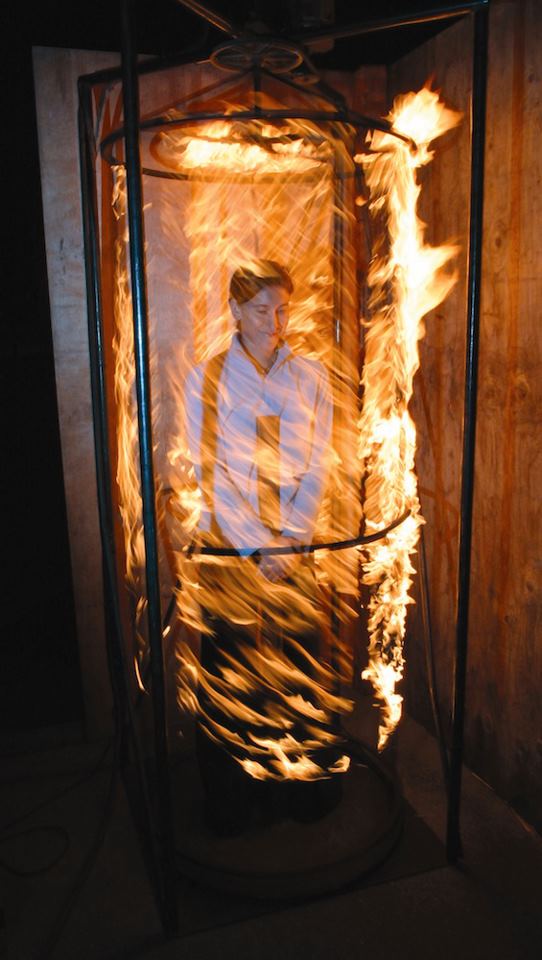

Lin Hwai-min
cursive II
Ross MacGibbon
Cloud Gate Dance Theatre of Taiwan
Lin Hwai-min’s Cursive II is inspired by the aesthetics of calligraphy. Set to music by John Cage, it is an exquisite meditation on the balancing of opposites presented in delicate simplicity, allowing no distraction from the details of the dance.

Alexandre Burton
Impacts
If you’ve never seen a Tesla coil in person, it’s a remarkable experience. Purple plasma flashes in unpredictable, wide-reaching bolts. The sound cracks with more fearsomeness than a whip. The air fills with the sterile acridity of ozone. The effect is equal parts frightening and beautiful; this machinery can use enough voltage to carbonize your flesh right down to the bone, yet some self-destructive impulse tells you to look closer. Alexandre Burton plays with this very impulse in his installation, Impacts. The exhibition features several Tesla coils that hang from the ceiling. They fire, not against a cage or predictable grounding surface, but a delicate pane of glass, so the viewer can appreciate the plasma filaments like a framed piece of art or a caged lion.
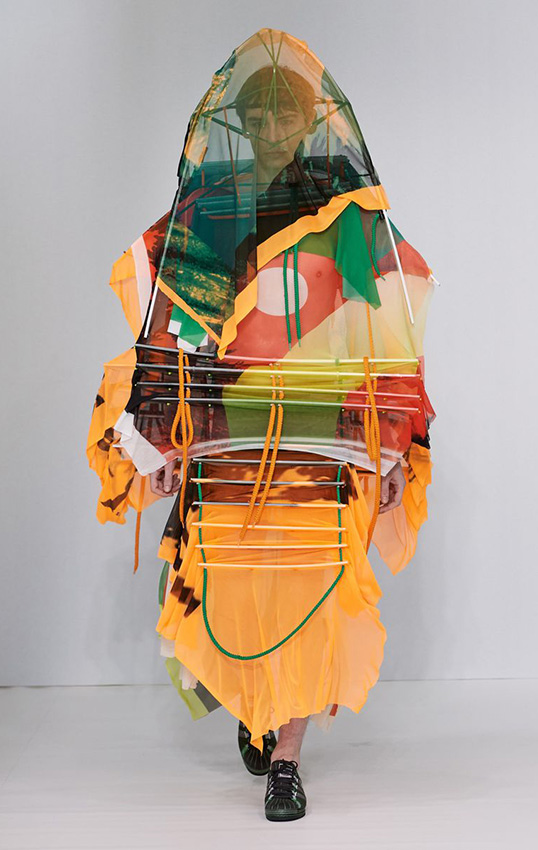
CRAIG GREEN
Paris Fashion Week Fall/Winter 2020
The collection’s first half was staunchly buffered by outerwear resembling that of protective armor, with contemporary suiting and shirting turned upside down by boxy and robust puffer-like additives […] These qualities were furthered in an array of pieces that look like camping tents with ladders hanging from the front and even in pieces that resembled wire mesh attached to the body, emitting cage-like qualities that tie into Green’s continued themes surrounding the dissection of the male psyche.

Seiran Tsuno
Appearing like ghostly cages which seem to float above the body, Seiran Tsuno’s designs are delicately abstract, distorting and disrupting the human-form. Emphasising the shoulders, chest, and thighs, there is a subtlety to her pieces: they don’t scream and shout but instead sit quietly in their uniqueness […] Creating a base is the first step, which Tsuno then draws on using the 3D pens. As it becomes airborne, the strands of melted plastic ink solidify, before Tsuno removes the base. The result is a piece that has the delicacy of fine jewellery, only in garment form.

Coop Himmelb(l)au
Paradise Cage
Museum of Contemporary Art
Los Angeles
Known as the punk rockers of architecture Coop Himmelb(l)au was founded in Vienna in 1968 by Wolf Prix, Helmut Swiczinsky and Michael Holzer. With the exhibition ‘Wiener Supersommer’ in 1976 they delivered an aggressive alternative to the usual urban architecture and stated their name as a provocative, mould-breaking studio not afraid to go beyond the scope of architecture.
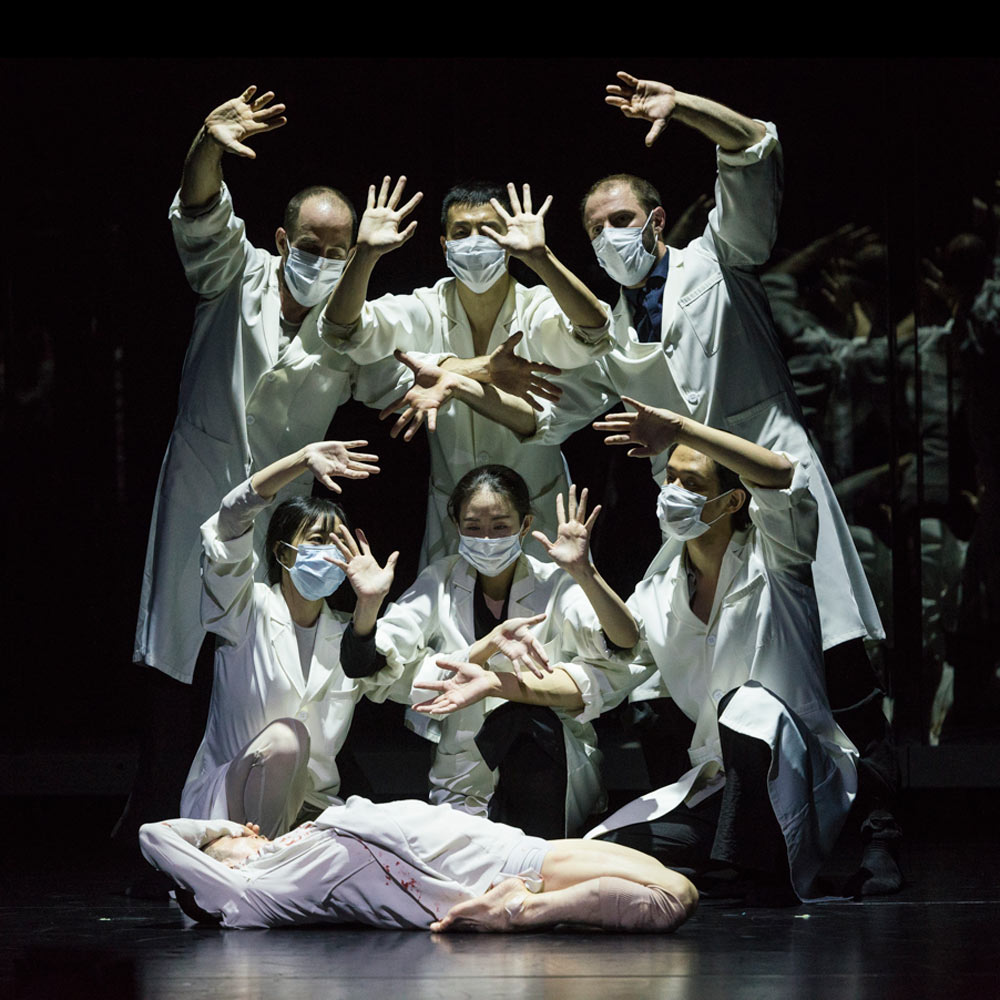
Sidi Larbi Cherkaoui / Yabin Studio & Eastman
Genesi
Figures in white coats wearing masks over their mouths, observing and conducting tests on other people. Between them stand glass cages suggestive of gigantic test tubes. GENESIS生长, as the title suggests, is a show about the origins of things. We are born and then we die, and in the meantime we undergo constant testing and increasing estrangement from the natural world.
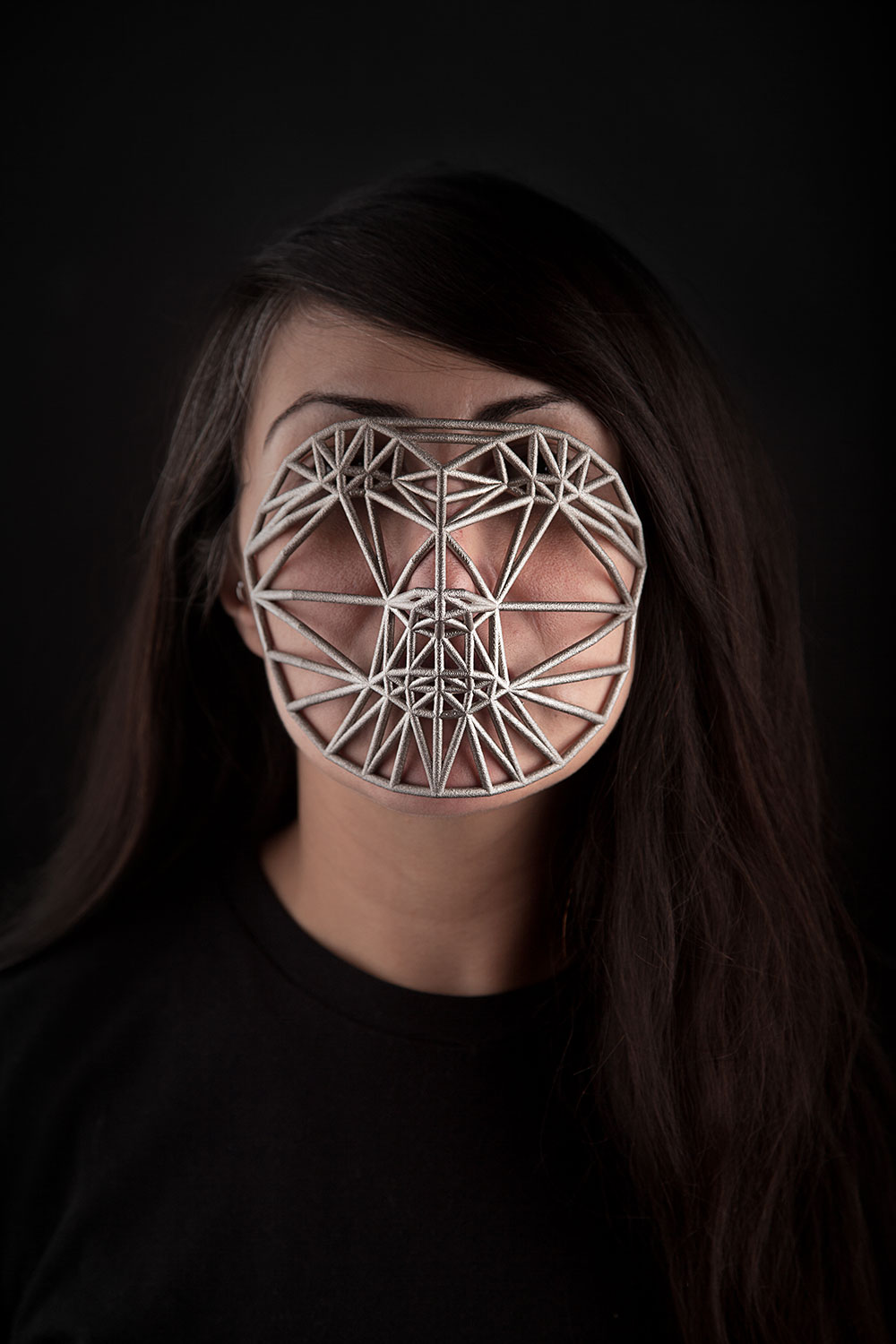

E.A.T
E.A.T
Experiments in Art & Technology
In 1966, 10 New York artists worked with 30 engineers and scientists from the world renowned Bell Telephone Laboratories to create groundbreaking performances, known as 9 Evenings: Theatre and Engineering. Artists included Andy Warhol, John Cage, Lucinda Childs, Vyvind Fahlstrvm, Alex Hay, Deborah Hay, Steve Paxton, Yvonne Rainer, Robert Rauschenberg, David Tudor, and Robert Whitman. Notable engineers involved include: Bela Julesz, Billy Kluver, Max Mathews, John Pierce, Manfred Schroeder, and Fred Waldhauer.

Rothschild Eva
Cages
Rothschild’s practice involves both conceptual and socio-political ideas alongside traditional approaches to making sculpture. Through an investigation into form and materiality, her works balance, stack, wrap and knot materials around geometric shapes and structures – such materials that often appear to transcend their physical limitations, hover between representation, symbolism and actual form. By deliberately destabilizing physical and visual characteristics in her work, Rothschild not only questions the aesthetics of art, in particular minimalism, but also those of belief in social liberation and spiritual movements.

IANNIS XENAKIS
PITHOPRAKTA
During the 1950s and early 1960s‚ Iannis Xenakis represented an alternative avantgarde‚ with a radical approach to form and texture that rejected the serial mechanics of Boulez and Stockhausen‚ and involved a uniquely intense interpretation of ideas about probability and randomness. A world away from John Cage’s laidback experiments[…] The two short orchestral works‚ Metastasis and Pithoprakta‚ are undoubtedly far more austere‚ more primitive in their overall effect‚ than the exuberant‚ hyperactive Eonta‚ whose ferociously demanding writing for piano and five brass players pulsates with the kind of creative energy that the orchestral pieces seek to suppress.

joan jonas
Джоан Джонас
جوان جوناس
조안 조나스
ジョーン・ジョナス
Joan Jonas, believing that sculpture and painting were exhausted mediums, became known for her pioneering work in performance and video art. Jonas, who studied sculpture and art history, was deeply influenced by the work of Trisha Brown, with whom she studied dance, as well as John Cage and Claes Oldenburg, particular in their exploration of non-linear narrative structure and form. Jonas’s own work has frequently engaged and questioned portrayals of female identity in theatric and self-reflexive ways, using ritual-like gestures, masks, mirrors, and costumes.

Scenocosme
Matieres Sensibles
file festival
Matières sensibles est une série de sculptures réalisées à partir de feuilles de placage de bois très fines et délicates. Ces feuilles de bois possèdent des zones tactiles sonores distinctes qui suivent les veines naturelles du bois. Nos recherches nous ont permis de développer un processus artistique et technique invisible et délicat. Ce travail minutieux nous donne ainsi la possibilité de composer une partition sonore sensible qui se révèle au contact des différents dessins du bois. Nous avons inventé ce procédé de Bio hacking que nous nommons “marqueterie interactive”.Nos sculptures de bois produisent des sons lorsque que les spectateurs les frôlent. Elles frémissent, ronronnent, crissent… émettent des timbres sonores variés. Nous utilisons ici les sons pour stimuler un comportement gestuel et haptique.Ces sculptures de bois proposent une relation intime et sensorielle entre le bois et le corps du spectateur en révélant une mémoire sonore au contact physique de la matière.Depuis plusieurs années, nous inventons des oeuvres interactives qui mettent en scène les éléments naturels et les corps des spectateurs. Dans cette œuvre, nous utilisons le bois comme une surface interactive sensible. En interprétant cette sensorialité nous rappelons que notre environnement est fait non pas de choses inertes, mais vivantes, réactives. L’énergie électrostatique du corps humain est l’élément déclencheur de cette œuvre. Les zones interactives suivent exactement les veines du bois.
.
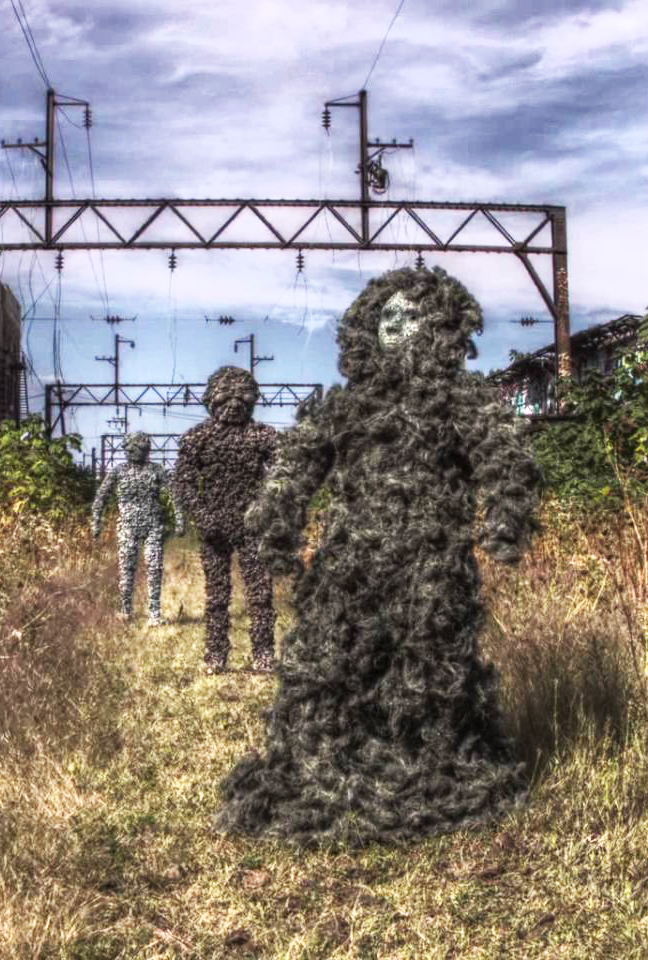
Tobias Stretch
Craco
Tobias Stretch channels the beauty and melancholia of Hauschka’s single “Craco” in his uncanny video filmed in Philadelphia’s answer to Brooklyn’s High Line, Reading Viaduct Park. With music videos for Radiohead, Crystal Fighters and Christopher Bono to his name, the Philly-based animator is known for his distinct aesthetic and method, pairing landscape photography with life-size stop-motion puppets. “I thought right from the beginning when I saw Tobias’s work that it has a mixture of analog and handmade elements and a surreal atmosphere. In my music you have similar elements,” says Hauschka himself, aka the German pianist and composer Volker Bertelmann, who headline’s London’s Union Chapel tonight as part of his European tour. Although best known as a 21st-Century protagonist of the prepared piano practice championed by John Cage, Bertelmann “left all the preparations at home” in order to work with a pure sound on this track. Named after the Italian ghost town, “Craco” is taken from his entropy-laced album Abandoned City and played to Stretch’s own fascination with urban decay. “The music was there beforehand, but I had a bowl of music and a bowl of names and I tried to pair them up. I think the music sounded not only like an abandoned place but also like a nostalgic place and that’s why I thought it was a great match.”
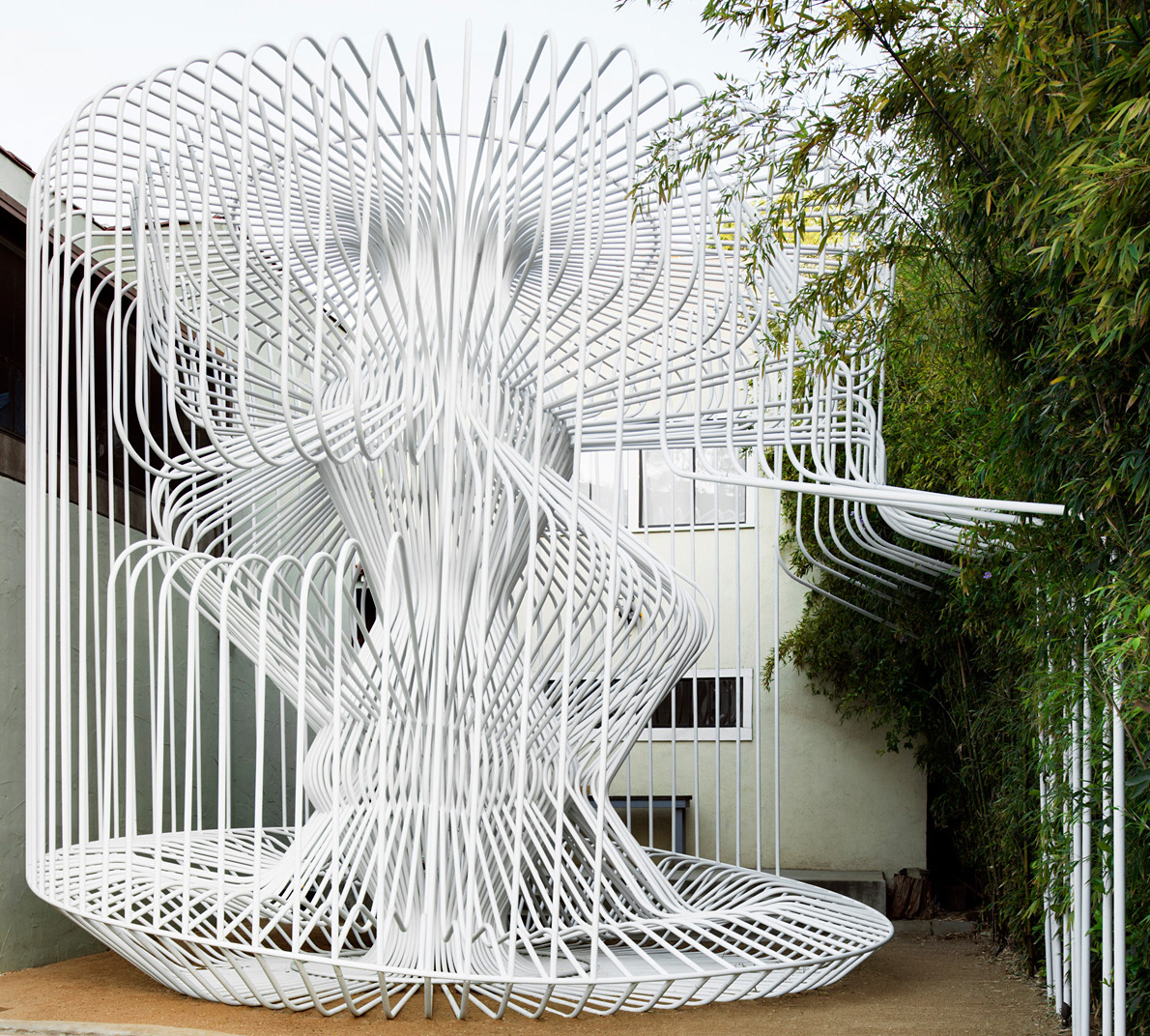

Cornelius Cardew
Treatise
Aujourd’hui, l’œuvre de Cardew passionne de plus en plus d’artistes et les interprétations de son Treatise sont de plus en plus nombreuses.
” Treatise est le résultat d’une collaboration entre Cardew le compositeur et Cardew le graphiste professionnel… Les formes utilisées dans Treatise sont simples – cercles, lignes, triangles, carrés, ellipses – de parfaites formes géométriques qui, d’un impeccable coup de crayon, sont soumises dans la partition à la destruction et à la distorsion. Treatise est un voyage graphique global, un enchevêtrement et une combinaison continus d’éléments graphiques donnant naissance à une longue composition visuelle dont la signification en termes sonores n’est jamais spécifiée.” (Michael Nyman, Experimental Music : Cage et au-delà)



Merce Cunningham
简宁汉
מרס קנינגהם
マース·カニングハム
머시 디스 커닝햄
МЕРС КАННИНГЕМ
Beach Birds
dance
Cunningham said of his choreography for “Beach Birds“, “It is all based on individual physical phrasing. The dancers don’t have to be exactly together. They can dance like a flock of birds, when they suddenly take off.” A work for eleven dancers, the rhythm for “Beach Birds” was much more fluid than other Cunningham dances, so that the sections could differ in length from performance to performance. John Cage composed the music, and painter Marsha Skinner provided the costumes and décor.

matthew divito
cage
gif

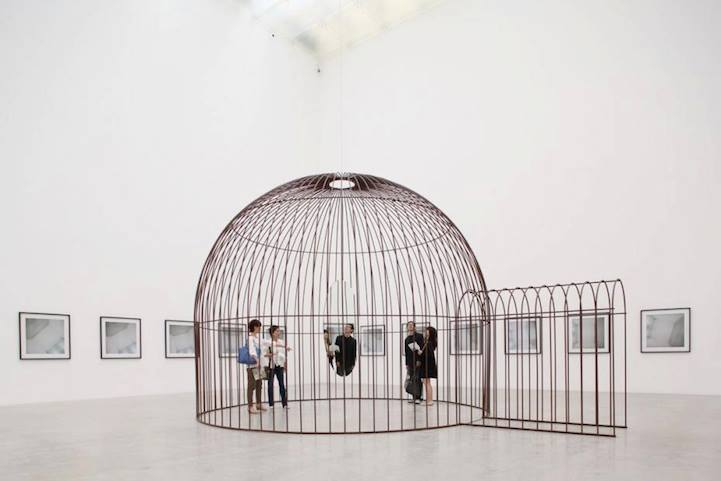
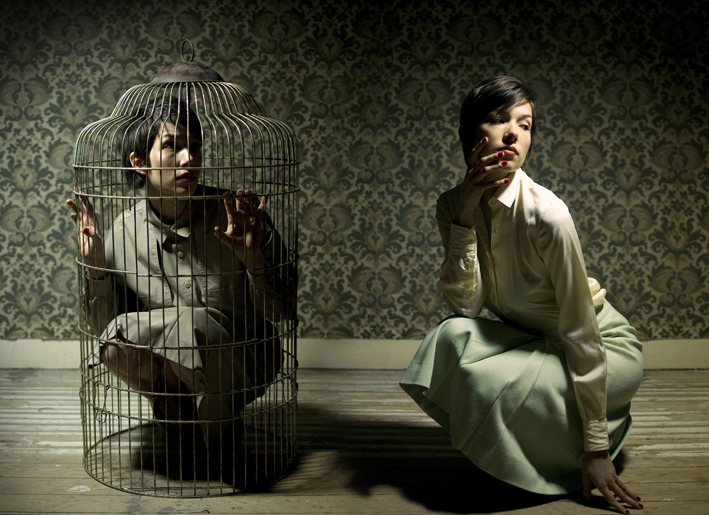

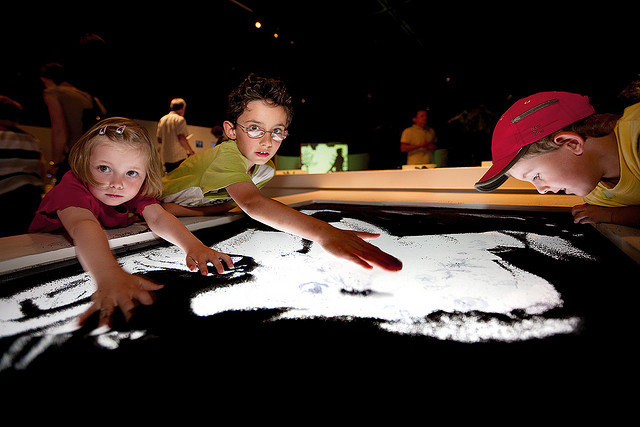
YUNSIL HEO & HYUNWOO BANG
Oasis
Fabriqué avec traitement. Une surface recouverte de sable noir se transforme en une piscine pleine de vie lorsque les gens attrapent et enlèvent une poignée de sable. Dans ce micro-monde, des créatures virtuelles naissent, vivent et périssent, reconnaissent leurs limites spatiales et leurs obstacles à la vie et réagissent au contact des gens de diverses manières. Un moteur de vision par ordinateur en temps réel a été développé pour interpréter l’état physique des divers matériaux de l’installation. Le programme remplit des créatures avec diverses caractéristiques et contrôle leurs comportements en temps réel. Une intelligence en essaim a été mise en œuvre pour simuler les comportements de flocage des créatures et leurs mouvements réalistes. L’Oasis n’est pas un appareil inventé pour que les gens “ utilisent ”. C’est un espace ludique où les gens ressentent la nature, trouvent des formes de vie, interagissent avec et créent des mondes virtuels. Il suscite l’instinct de base des gens à toucher les matériaux naturels.